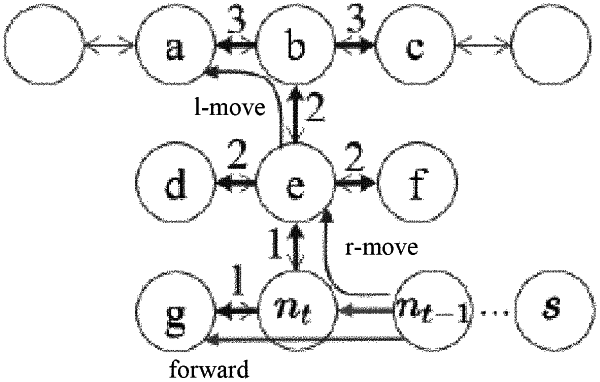| CPC G05D 1/0212 (2013.01) [G05D 2201/0211 (2013.01)] | 14 Claims |

|
1. A method for navigating a robot in a task environment, comprising:
receiving, by a pre-trained sequential prediction model, a navigation graph of the task environment, instructions in natural language and an initial location of the robot in the navigation graph, wherein the navigation graph comprises nodes indicating locations in the task environment, coordinates of the nodes, and edges indicating connectivity between the locations; and
predicting sequentially, by the pre-trained sequential prediction model, a sequence of single-step behaviors executable by the robot to navigate the robot from the initial location to a destination, wherein the predicting sequentially a sequence of single-step behaviors executable by the robot to navigate the robot from the initial location to a destination comprises:
for each single step during the prediction:
generating an adaptive context by adapting the navigation graph to a current prediction process corresponding to the single step, and
predicting a single-step behavior for the single-step based on at least the generated adaptive context and the instructions in natural language, wherein the single-step behavior is performed at a target node being a current node, and for each single step during the prediction, the generating the adaptive context comprises:
step i: searching for, in the navigation graph, valid node transitions between the current node corresponding to the single step and neighbor nodes of the current node, wherein the neighbor nodes of the current node are not a previous node of the current node and are reachable by the robot from the current node without passing an intermediate node, and the previous node of the current node is a predicted node passed by the robot before the current node;
step ii: predicting a behavior of each of the valid node transitions based on coordinates of the current node, the previous node of the current node, and a neighbor node of the current node;
step iii: repeating steps i and ii by using the neighbor node as the current node until a distance between the neighbor node used as the current node and the target node of the current single step is greater than a preset value; and
step iv: converting all of the found valid node transitions and the predicted behaviors thereof to graph format to generate the adaptive context for the each single step.
|